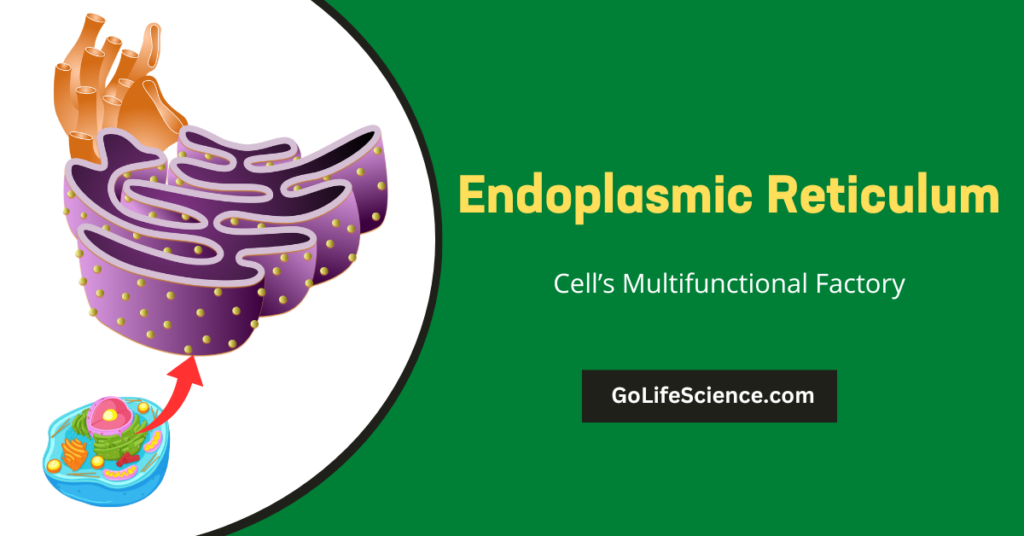
A vacuole is a membrane-bound organelle found in the cells of eukaryotic organisms. It is a fluid-filled sac that is used for a variety of functions, including storage, waste disposal, and maintaining the cell’s shape.
Vacuoles are found in both plant and animal cells, but they are more prominent in plant cells and can make up a significant portion of the cell’s volume.
The vacuole holds large amounts of water or food. Don’t forget that these can also hold plant waste products. Those waste products are slowly broken into small pieces that cannot hurt the cell. It holds onto things that the cell might need, just like a backpack.

Table of Contents
Historical aspects
- Contractile vacuoles were first observed by Spallanzani (1776) in Protozoa. He called this cell organelle as “Stars”
- Dujardin (1841), he named these stars as Vacuoles.
- Schleiden applied this term in plant cells to distinguish the structure with cell sap.
What are Vacuoles?
Vacuoles are storage bubbles found in cells. They are found in both animal and plant cells but are much larger in plant cells. These cell organelles might store food or any variety of nutrients a cell might need to survive.
They can even store waste products, so the rest of the cell is protected from contamination. Eventually, those waste products would be sent out of the cell.
However, plant cells, notably mature parenchyma cells, have a large central vacuole surrounded by a membrane called the tonoplast. The fluid they contain is called cell sap.
It is a concentrated solution of mineral salts, sugars, organic acids, oxygen, carbon dioxide, pigments, and some waste and secondary products of metabolism.
The structure of vacuoles is fairly simple. There is a membrane that surrounds a mass of fluid. In that fluid are nutrients or waste products. Plants may also use vacuoles to store water.
Those tiny water bags help to support the plant. They are closely related to objects called vesicles that are found throughout the cell.
In-plant cells, these are much larger than in animal cells. When a plant cell has stopped growing, there is usually one very large vacuole. Sometimes it can take up more than half of the cell’s volume.
In most cells from the vegetative tissues of the plant body, the central vacuole occupies much of the volume and is essential for much of the physiology of the organism.
In-Plant cells, these cell organelles were discovered with the early microscope and, as indicated in the etymology of the word, originally defined as a cell space empty of cytoplasmic matter.
Structure of the vacuole
- The structure of a vacuole is relatively simple. It is composed of a single membrane called the tonoplast, which is made up of lipids and proteins.
- The tonoplast is semi-permeable, meaning that it allows some substances to pass through while preventing others from entering or exiting the vacuole.
- In plant cells, the vacuole is typically large and occupies a central location within the cell.
- In animal cells, vacuoles are smaller and can be found in various locations within the cell.
- There are several types of vacuoles, including central vacuoles, which are large and found in the centre of the cell, and contractile vacuoles, which are found in certain types of single-celled organisms and help to regulate the osmotic balance of the cell.
Types of Vacuoles
There are several types of vacuoles that are found in different types of cells. Some of the main types of vacuoles include:
- Central vacuoles: Central vacuoles are large, fluid-filled vacuoles that are found in the center of plant cells. They can make up a significant portion of the cell’s volume and are responsible for storing water, ions, pigments, and enzymes. Central vacuoles also play a role in maintaining the cell’s shape and support the rigid cell wall of plant cells.
- Contractile vacuoles: Contractile vacuoles are found in certain types of single-celled organisms, such as protozoa and fungi. They are responsible for regulating the osmotic balance of the cell by removing excess water. Contractile vacuoles have a muscular wall that can contract and expel water from the cell.
- Food vacuoles: Food vacuoles are found in certain types of single-celled organisms, such as amoeba, and are used to digest and absorb food particles. Food vacuoles are formed when food particles are engulfed by the cell and are then brought into contact with lysosomes, which contain enzymes that break down the food particles.
- Secretory vacuoles: Secretory vacuoles are found in certain types of cells, such as glandular cells, and are responsible for storing and releasing substances, such as hormones and enzymes, into the extracellular space. Secretory vacuoles are formed when the cell synthesizes a substance and then transports it to the vacuole for storage until it is needed.
- Vacuoles in animals: Animal cells also have vacuoles, but they are generally smaller and less prominent than in plant cells. Animal cells can have multiple vacuoles, which can be found in various locations within the cell. Animal vacuoles can be involved in functions such as waste disposal, storage, and cell signaling.
Functions of Vacuoles
One of the primary functions of vacuoles is storage.
- Vacuoles can store a variety of substances, including water, ions, sugars, pigments, and enzymes. For example, in plant cells, vacuoles can store excess water, which helps to maintain the cell’s shape and prevent it from bursting.
- It can also store pigments, such as anthocyanins, which give certain plants their vibrant colors.
- Another important function of vacuoles is waste disposal.
- It can be used to remove waste materials and foreign substances from the cell.
- In animal cells, lysosomes, which are small organelles that contain enzymes that break down waste materials, can fuse with vacuoles to help dispose of waste.
- It plays a role in maintaining the shape of the cell.
- In plant cells, the large central vacuole helps to support the cell’s rigid cell wall and gives the cell its shape.
- In addition to these functions, vacuoles also play a role in cell signalling and communication. For example, vacuoles can send signals to other cells by releasing molecules like hormones and enzymes into the extracellular space.
- In summary, vacuoles are essential organelles that play a variety of roles in the cell, including storage, waste disposal, and maintaining the cell’s shape.
- They are found in both plant and animal cells and are an important component of the cell’s overall function.
Location of Vacuoles
In a plant cell, it is very prominent in the Centre, often shoving the other organelles up against the cell membrane.
These water-filled organelles, along with the cell wall, help give the shell its structure, which allows for such phenomena as a thin-stemmed flower standing up straight.






